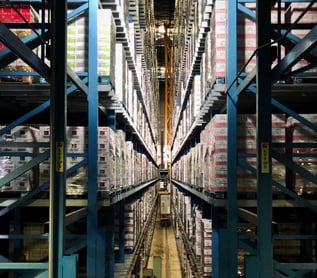The Produce Marketing Association (PMA), the trade organization representing companies from every segment of the global fresh produce and floral supply chain, argues that artificial intelligence (AI) is changing the way our food is produced.
“Advancements such as machine learning, image recognition, and predictive modeling are being used in food production to boost productivity and efficiency,” writes Vonnie Estes, PMA Vice President Technology.
Estes cites such AI examples as:
- Farms are using AI-driven robots and autonomous vehicles for planting and harvesting.
- Agronomist-trained algorithms are providing operational recommendations based on crop biology that can reduce chemical and water input.
Consequences of AI in the Food Chain

Estes, who has an undergraduate degree in horticulture and an advanced degree in plant
pathology, says there are positive outcomes from this trend towards artificial intelligence in food production.
“As we digitize the agricultural supply chain, we reduce food waste, improve our ability to respond quickly to potential recalls and develop supply chain transparency. AI will help eliminate inefficiencies for the producer and in the supply chain and bring the transparency and convenience to consumers they crave,” writes Estes.
She also cautions, however, that there are ethical issues surrounding AI that must be addressed to achieve the best outcomes possible.
Ethical Issues for AI in Food Production
Estes points to five prime ethical issues for AI in food production:
- Trust and Transparency in Business Practices: Customers are increasingly demanding transparency along the food supply chain and AI, machine learning and blockchain can facilitate this transparency. Food safety, pesticide use, nutrition claims and labeling can all be addressed via AI.
- Use of Data and Insights: From Google to Apple to Facebook data privacy is the hottest topic today. The food production industry must communicate how data and insights gained from it can be used with permission and decide on ownership of the data. AI will only work with a certain amount of data free flow so food producers must share information with neighbors in order to gain insights into predictions and patterns based on large data sets.
- Security: Ransomware and Cyber Attacks pose a real threat to food production. The industry needs to have plans in place for the protection of sensitive data used by companies that aggregate data. As AI requires more and more data to perform tasks, there will be more opportunities for bad actors to take advantage.
- Bias: Estes writes that “we shouldn’t forget that AI systems are created by humans, who can be biased and judgmental. Many AI systems will continue to be trained using bad data, making this an ongoing problem”. The goal is to avoid bad assumptions and scientific bias baked into the AI algorithms.
- Access: AI can boost productivity in food production but only if access is universal. New AI tools are expensive to develop and adopt so funding must be addressed. If producers of all crops have access, then the world will benefit.
AI in Action in Food Production
Artificial Intelligence in food production may sound like something from futuristic science fiction but there are applications already being used including:
- Sorting Food: An advanced AI application, TOMRA Sorting Food, uses sensor-based optical sorting solutions with machine learning functionalities to sort the sizes of potatoes that can help manufacturers parcel them into groups for making French fries, potato chips, and hash browns.
- Improving the Supply Chain: AI with traceability applications can help keep track of food from farm to market. This is important as food safety regulations are becoming stricter and consumers are demanding more transparency on what winds up on their tables.
- Ensuring Personal Hygiene: AI systems are being used in restaurants and food production facilities that use cameras and facial recognition to monitor workers for hat and mask wearing as required by food safety laws.
- Cleaning Processing Equipment: University of Nottingham researchers are developing a system that uses AI to reduce equipment cleaning time and resources. The Self-Optimizing-Clean-In-Place uses ultrasonic sensing and optical fluorescence imaging to measure food residue, as well as microbial debris in a piece of equipment.
“AI’s role in the food industry is becoming increasingly important due to its ability to help save food that may go bad, improve food workers’ hygiene, and clean processing equipment more quickly. The technology ultimately has the potential to create a healthier and more affordable food industry for workers and consumers alike,” writes Karl Utermohlen in Heartbeat.
Part of FreshByte Software’s package is state-of-the-art traceability, backwards and forwards, utilizing technology such as barcodes and RFIDs on leafy greens, pears, apples, and other fresh produce.
Contact FreshByte Software today to find out how our distribution, traceability, accounting, and inventory software solutions can help make your wholesale distribution business successful.





